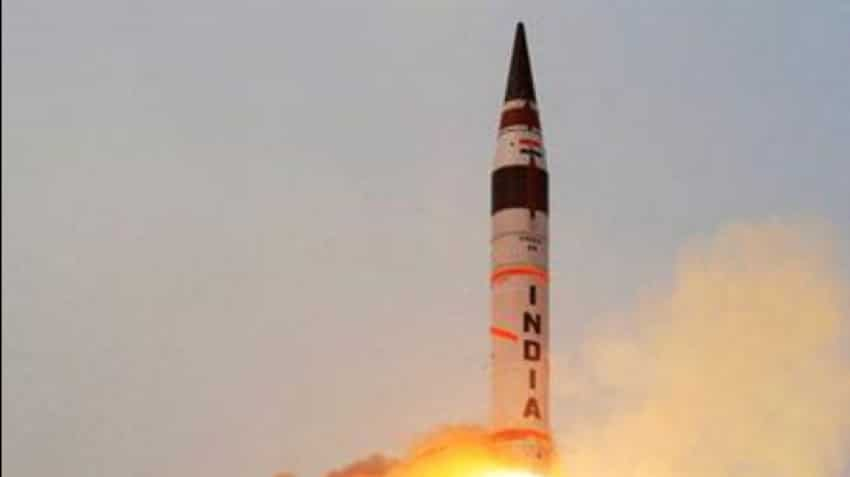India on Monday has successfully test-fired intercontinental surface-to-surface nuclear capable ballistic missile Agni-V from the Abdul Kalam Island in the Odisha state.
The country's Defence Research and Development Organisation (DRDO) launched the missile at 11:05 am (IST) from a mobile launcher complex-4 of the Integrated Test Range (ITR), IANS reported quoting defence sources as saying.
The missile is developed by the DRDO under the Integrated Guided Missile Development Program, it said.
ALSO READ: India successfully test fires twin missiles in Odisha
Here are key things to know about Agni-V missile:
1. Agni-V is one of the most advanced missiles, which is capable of striking a target more than 5,000 km.
2. The missile is about 17 metres long, 2-metre wide and has launch weight of around 50 tonnes.
3. The missile can carry a nuclear warhead of more than one tonne.
4. Once the Agni-V is inducted in the Indian military, India will join the super exclusive club of countries with ICBMs alongside the US, Russia, China, France and Britain.
5. The first test of Agni-V was conducted on April 19, 2012, while the second test was launched on September 15, 2013 and the third was on January 31, 2015.
Meanwhile, the official Twitter handle of President Pranab Mukherjee congratulated the DRDO officials for successful launch of the Agni-V missile.
"Congratulations DRDO for successfully test firing Agni-V. It will enhance our strategic and deterrence capabilities. #PresidentMukherjee," President of India's office tweeted.
May the divine teachings of Lord Jesus Christ inspire us to contribute our very best for the welfare of humanity #PresidentMukherjee
— President of India (@RashtrapatiBhvn) December 25, 2016
ALSO READ: India becomes 35th nation to join Missile Technology Control Regime
01:45 PM IST







 India successfully test fires twin missiles in Odisha
India successfully test fires twin missiles in Odisha India, Russia agree missile sales, joint venture for helicopters
India, Russia agree missile sales, joint venture for helicopters  India successfully test-fires surface-to-air missile
India successfully test-fires surface-to-air missile India becomes 35th nation to join Missile Technology Control Regime
India becomes 35th nation to join Missile Technology Control Regime Reliance Defence bags 16 industrial licences for missiles, equipment
Reliance Defence bags 16 industrial licences for missiles, equipment